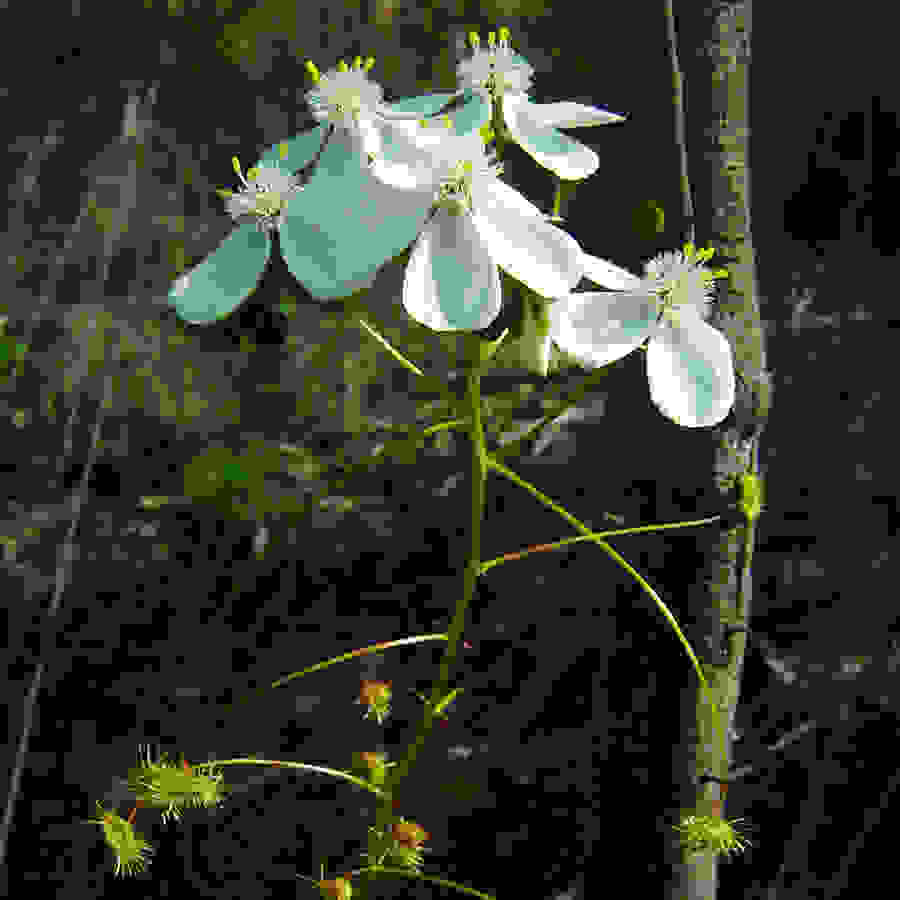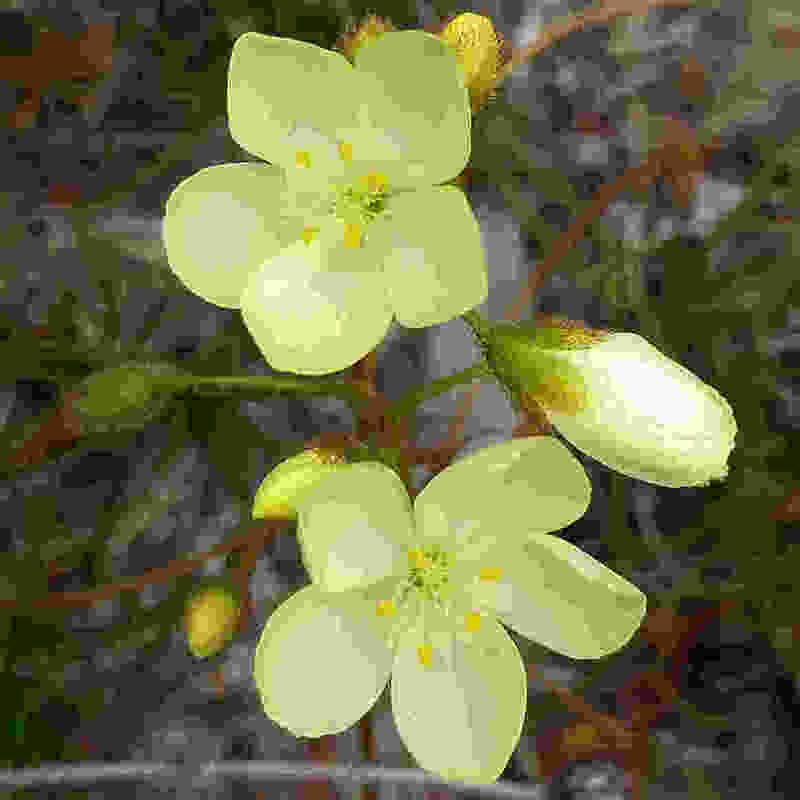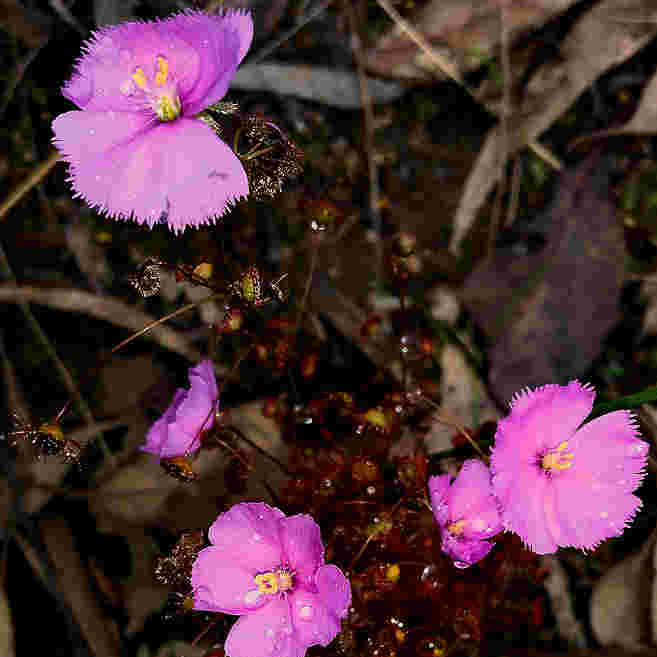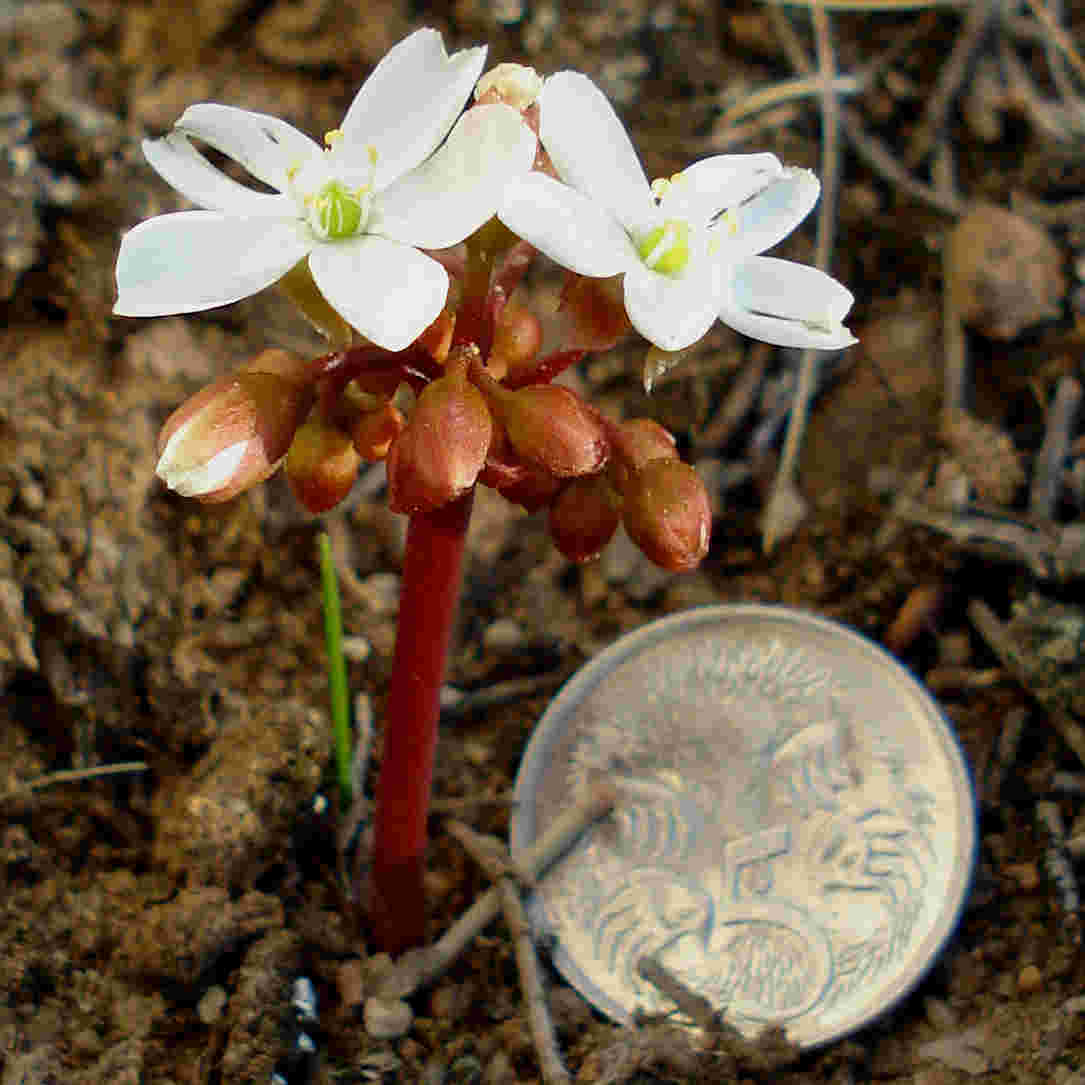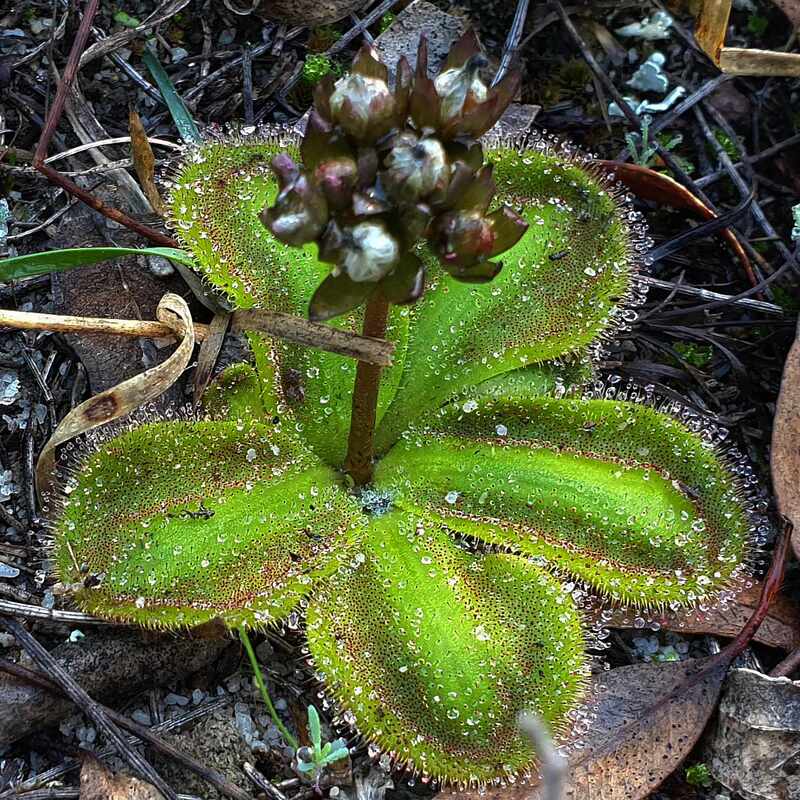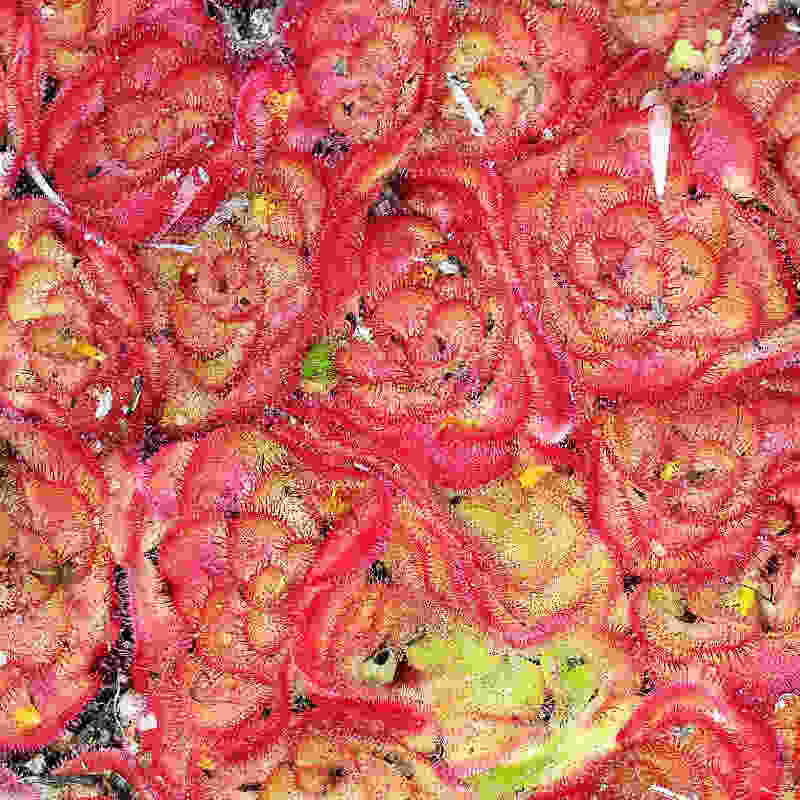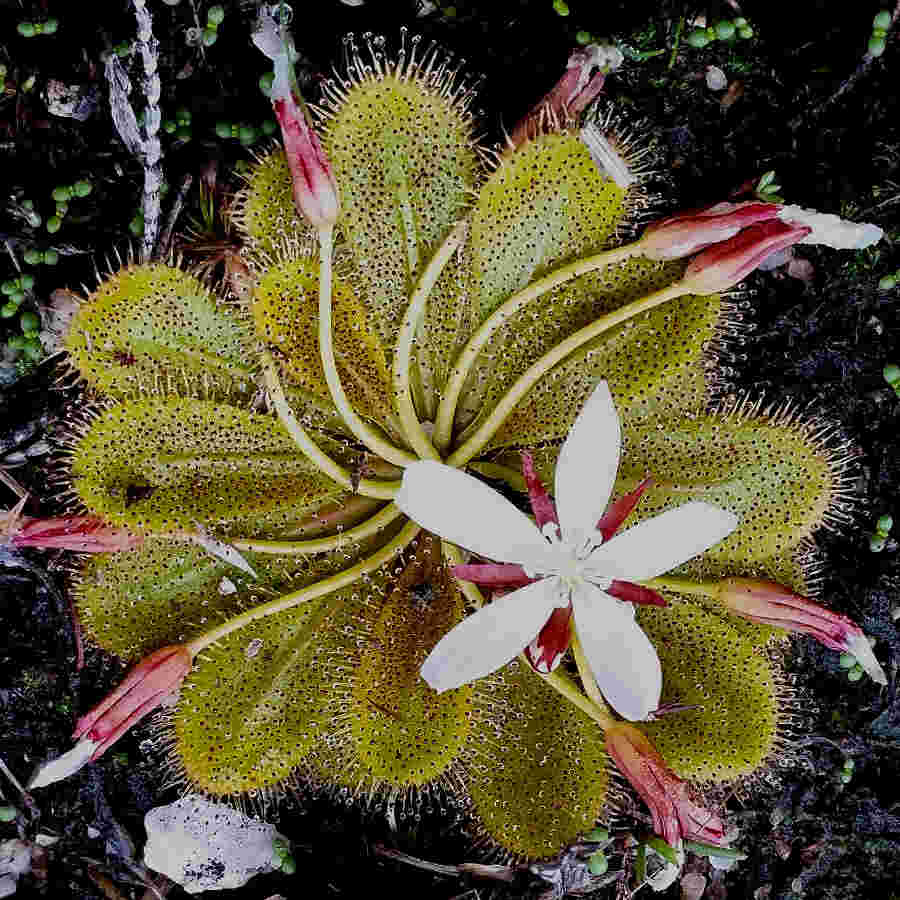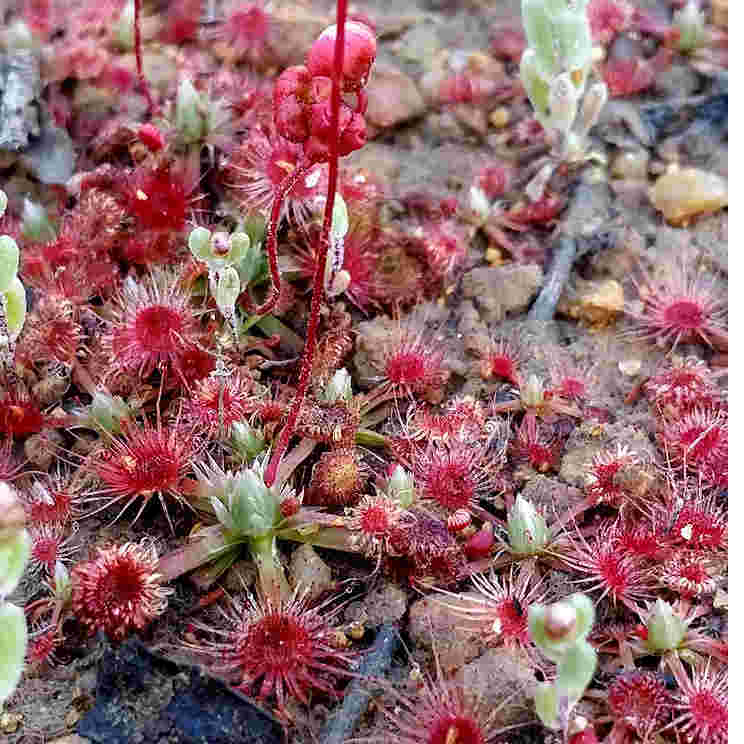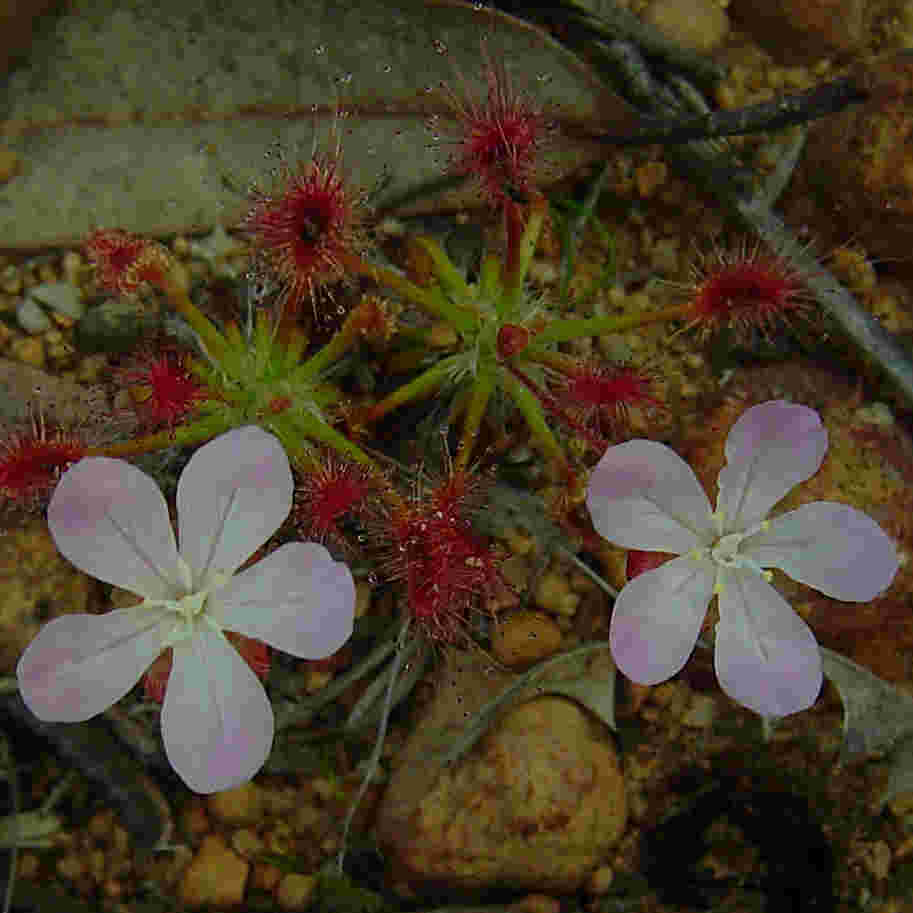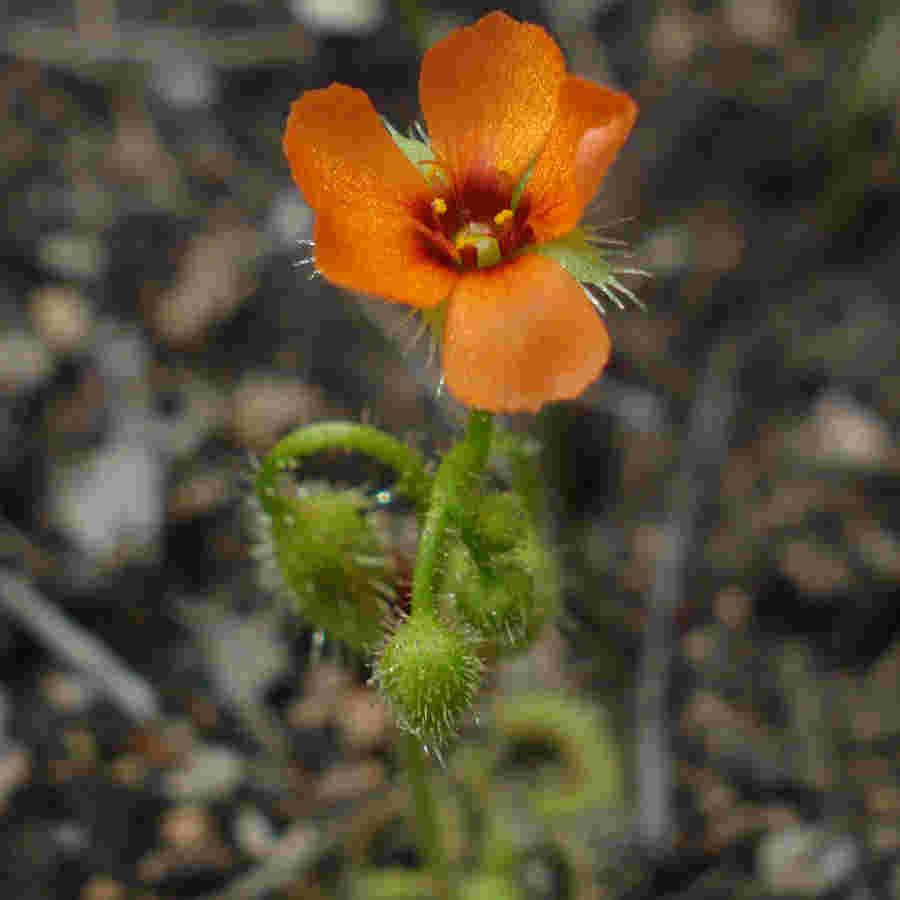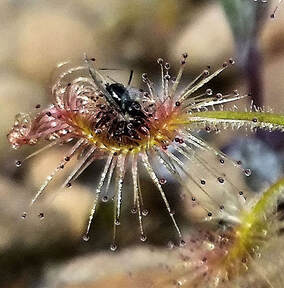 Tendrils enclosing an aphid
Tendrils enclosing an aphid I decided to whip up a quick article on sundews but then researched them. Oh glory! So much to learn and so little time to do it. Why are we humans so intelligent and yet so stupid as we obsess about minor things and harm ourselves and our environment when there is so much more to our world?
The genus name Drosera comes from the Greek word “dewy” referring to modified leaves with sticky tentacles they use to catch insects. When an insect lands on them, tentacles rapidly wrap around it and exude an amazing brew of enzymes that turns them into soup – even the hard exoskeleton (chitin is a protein). Yum!
Sundews have conventional flowers with numerous styles (pollen collecting bits), and have the flowers well above the leaves (possibly to avoid insect pollinators being eaten). Vegetation colour varies with much redder forms on waterlogged and infertile soils, and parts more exposed to light
1 Sundews with tubers. This enables them to survive over summer, use early-season soil water and nutrients, and even survive without catching insects. Subcategories include:
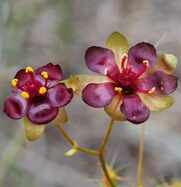 Drosera calycina
Drosera calycina Elsewhere in more open country, you mainly see the lovely sunny rainbow Drosera subhirtella. The lovely red flowered Drosera menziesii occurrs in wet hollows and waterways.
In late June I discovered a stunning golden rainbow Drosera calycina at Yilliminning nature reserve, which is a long way east of its normal range
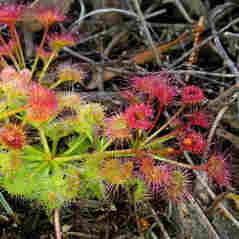 A fan-leaved sundew
A fan-leaved sundew
1c. Rosette-forming sundews have flat leaves coated with tendrils. Red ink sundew (due to red sap in the bulb) Drosera collina sends up a flowering head after rain in April -May, which dies off as the attractive leaves emerge. The leaves don’t absorb the insect soup that runs off to be absorbed by roots.
The spectacular painted sundew Drosera zonaria is found on very sandy soils and only flowers after fire. None of these occur at Foxes Lair but lovely clumps occur at Yilliminning Rock and Toolibin cemetery.
Water gaining patches in the clay soil north of the Claypit are red with a carpet of Cone Sundews (Drosera androsaceae). These have lost the ability to use nitrogen taken up by their roots and rely entirely on insect soup for this nutrient.
Shaggy Sundew Drosera Scorpioides prefers loamy gravelly soil near the jarrah trees, and the beautiful orange-flowered Pimpernel Sundew Drosera glandigulera prefers more fertile soil from fresh rock.
Please read this great sundew blog by the Wandering Scientist
